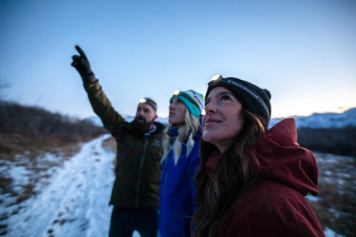Wild Blue Yonder Rafting operates two hours north of Jasper National Park in Grande Cache. Surrounded by mountains, wilderness, and three river valleys, Grande Cache is a rafter’s paradise. There are several rivers within a 30-minute drive of the town, so rafters spend less time on the bus and more time on the river. Certified guides at Wild Blue Yonder are whitewater rafting safety experts who know how to show guests a good time and keep them safe.
Gina Goldie, the company’s founder, oversaw updating the Alberta Rafting Safety Standards and co-authored COVID-19 Best Practices for Commercial River Operations, which is used in Alberta and British Columbia. With 23 years of safe operation on six different rivers, Wild Blue Yonder is one of the most reputable rafting companies in Western Canada. They offer several different rafting excursions in Alberta including one that lets you paddle rapids under the spectacular cliffs at Sulphur Gates.
We interviewed Goldie about how her business evolved during the pandemic, and her hopes for the future of tourism in Alberta.
What is the most valuable part of Alberta's tourism industry?
Although much of Alberta's tourism industry depends on our incredible natural environment, even outdoor adventure could not happen without thousands of dedicated staff, operators, managers, and owners. Everyone working to sustain the industry throughout this challenging time is the engine that drives Alberta tourism.




